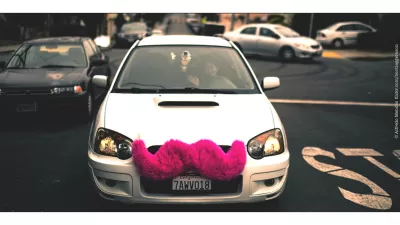Seattle is the first city in the country to limit the number of transportation network drivers allowed on the road at any given moment. The new regulation is a setback for companies like Uber, Lyft, and Sidecar and a major victory for cab companies.
“The new law would limit three companies — UberX, Lyft and Sidecar — to 150 drivers each on the road at any given time, for a collective total of 450 drivers. That’s a significant decrease from the 2,000 drivers the three companies estimate they have operating in the city right now,” reports Reid Wilson.
Cab companies in Seattle argued that transportation network companies have saturated the market, leaving them at a significant disadvantage. To help cab companies gain the advantage back, the new legislation also allows for an additional 200 taxi licenses over the next two years. The city hasn’t issued a new license since 1990.
The article quotes Seattle Mayor Ed Murray saying that he will sign the legislation, but he does not believe it represents a long-term solution to the integration of transportation network companies into the city’s transportation system.
Seattle's decision is just the latest in an ongoing debate around the country about the extent to which cities can regulate transportation network companies. Meanwhile, recent analysis and arguments have criticized the inefficiencies of taxis and called for greater implementation of transportation networks.
FULL STORY: Seattle becomes first city to cap Uber, Lyft vehicles

Trump Administration Could Effectively End Housing Voucher Program
Federal officials are eyeing major cuts to the Section 8 program that helps millions of low-income households pay rent.

Planetizen Federal Action Tracker
A weekly monitor of how Trump’s orders and actions are impacting planners and planning in America.

The 120 Year Old Tiny Home Villages That Sheltered San Francisco’s Earthquake Refugees
More than a century ago, San Francisco mobilized to house thousands of residents displaced by the 1906 earthquake. Could their strategy offer a model for the present?

HSR Reaches Key Settlement in Northern California City
The state’s high-speed rail authority reached an agreement with Millbrae, a key city on the train’s proposed route to San Francisco.

Washington State Legislature Passes Parking Reform Bill
A bill that would limit parking requirements for new developments is headed to the governor’s desk.

Missouri Law Would Ban Protections for Housing Voucher Users
A state law seeks to overturn source-of-income discrimination bans passed by several Missouri cities.
Urban Design for Planners 1: Software Tools
This six-course series explores essential urban design concepts using open source software and equips planners with the tools they need to participate fully in the urban design process.
Planning for Universal Design
Learn the tools for implementing Universal Design in planning regulations.
Ada County Highway District
Clanton & Associates, Inc.
Jessamine County Fiscal Court
Institute for Housing and Urban Development Studies (IHS)
City of Grandview
Harvard GSD Executive Education
Toledo-Lucas County Plan Commissions
Salt Lake City
NYU Wagner Graduate School of Public Service



























